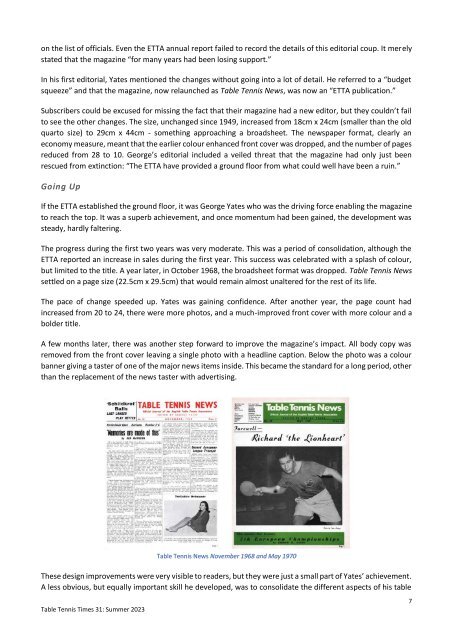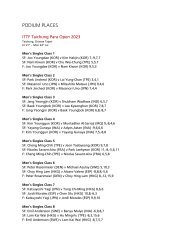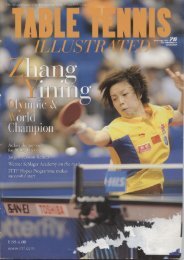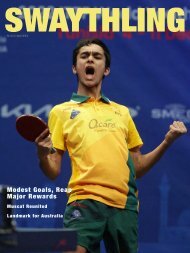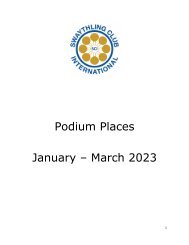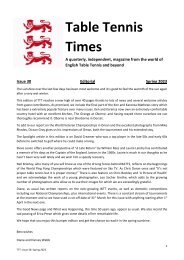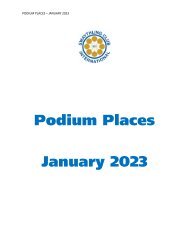TTT31. Summer 2023
Create successful ePaper yourself
Turn your PDF publications into a flip-book with our unique Google optimized e-Paper software.
on the list of officials. Even the ETTA annual report failed to record the details of this editorial coup. It merely<br />
stated that the magazine “for many years had been losing support.”<br />
In his first editorial, Yates mentioned the changes without going into a lot of detail. He referred to a “budget<br />
squeeze” and that the magazine, now relaunched as Table Tennis News, was now an “ETTA publication.”<br />
Subscribers could be excused for missing the fact that their magazine had a new editor, but they couldn’t fail<br />
to see the other changes. The size, unchanged since 1949, increased from 18cm x 24cm (smaller than the old<br />
quarto size) to 29cm x 44cm - something approaching a broadsheet. The newspaper format, clearly an<br />
economy measure, meant that the earlier colour enhanced front cover was dropped, and the number of pages<br />
reduced from 28 to 10. George’s editorial included a veiled threat that the magazine had only just been<br />
rescued from extinction: “The ETTA have provided a ground floor from what could well have been a ruin.”<br />
Going Up<br />
If the ETTA established the ground floor, it was George Yates who was the driving force enabling the magazine<br />
to reach the top. It was a superb achievement, and once momentum had been gained, the development was<br />
steady, hardly faltering.<br />
The progress during the first two years was very moderate. This was a period of consolidation, although the<br />
ETTA reported an increase in sales during the first year. This success was celebrated with a splash of colour,<br />
but limited to the title. A year later, in October 1968, the broadsheet format was dropped. Table Tennis News<br />
settled on a page size (22.5cm x 29.5cm) that would remain almost unaltered for the rest of its life.<br />
The pace of change speeded up. Yates was gaining confidence. After another year, the page count had<br />
increased from 20 to 24, there were more photos, and a much-improved front cover with more colour and a<br />
bolder title.<br />
A few months later, there was another step forward to improve the magazine’s impact. All body copy was<br />
removed from the front cover leaving a single photo with a headline caption. Below the photo was a colour<br />
banner giving a taster of one of the major news items inside. This became the standard for a long period, other<br />
than the replacement of the news taster with advertising.<br />
Table Tennis News November 1968 and May 1970<br />
These design improvements were very visible to readers, but they were just a small part of Yates’ achievement.<br />
A less obvious, but equally important skill he developed, was to consolidate the different aspects of his table<br />
Table Tennis Times 31: <strong>Summer</strong> <strong>2023</strong><br />
7


